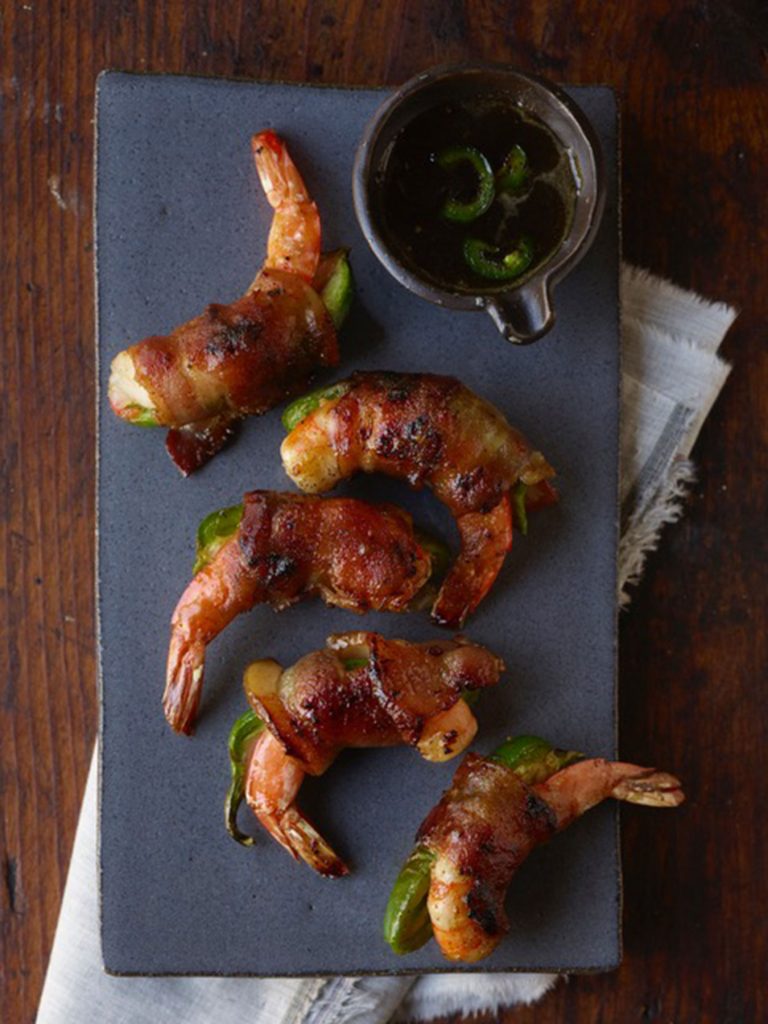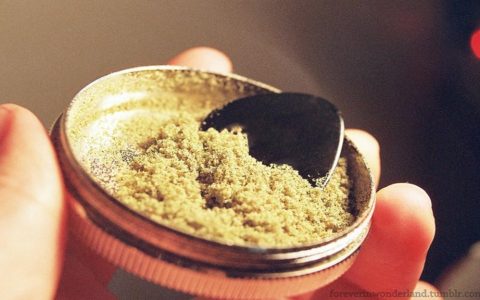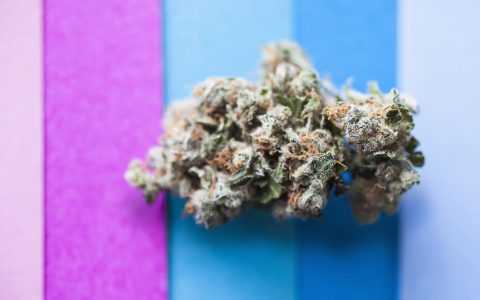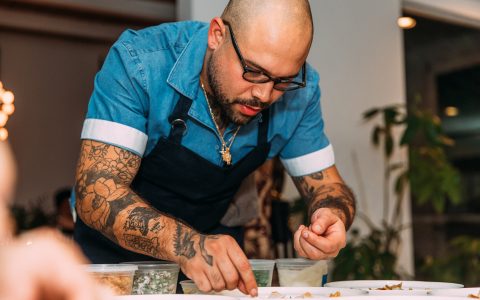“A lot of infusion recipes require you to decarb (see: decarboxylation) your cannabis for four hours or overnight—or by using a crockpot,” says Flickenger. “I wanted a short method. I wanted something that wasn’t going to make my apartment or my client’s home smell like cannabis while prepping, cooking, or eating it.”
The chef turned to concentrates and an infusion time of 10 to 15 minutes plus whatever time is required to actually cook the dish. For the best results—in both time and taste—kief is the way to go.
“It’s the least messy and least processed of the concentrates,” says Flickenger. “There are other concentrates out there that have no cannabis flavor at all because they’ve been distilled down to just the THC or CBD. By using kief, you’re getting little to no cannabis flavor, and the little cannabis flavor that’s in there tends to amplify the recipes and taste good.”
Instead of trying to cover up the taste and scent of marijuana altogether, a mild infusion can enhance the food without competing with the flavors already in place.
“If you’re making dishes that are slightly acidic with tomatoes, lemons or herbs, those dishes go really well with any kind of cannabis flavor that’s leftover.”
Dosing Practices in the Kitchen
 (Courtesy of Mortar ’n Pestle)
(Courtesy of Mortar ’n Pestle)
Flickenger acknowledges that other chefs often do infusions with glycerin or alcohol tinctures, which are useful for beverages, but he prefers to stick with fats. They’re not only ideal for fat-soluble THC, but also common and familiar to his students and clients.
It’s better to carefully introduce 10-30 milligrams of THC into a dish, rather than shove 500 milligrams in there.
“I teach people how to infuse directly into cream or heavy cream. You can also infuse directly into egg yolks, which is really fun, to make very specific dishes such as souffles or French desserts that don’t require any cream, butter or oil.”
One of his joys as a chef is “figuring out the puzzle” of infusing something that doesn’t have a creamy sauce or heavy fat base.
“One of my favorites is bruschetta,” he says. “Some versions use olive oil and some don’t. The only thing you can do is infuse your olive oil and either add it to the bruschetta or drizzle it over afterwards.”
However, the biggest problem when it comes to cannabis-infusions is that people just don’t know how to dose. Flickenger says it’s a common complaint among his students: “They tried edibles at a party or tried to make them at home. Either it did nothing for them or they were stoned for way longer than they wanted to be.”
The key is microdosing—down to the precise miligram. It’s better to carefully introduce 10-30 milligrams of THC into a dish, rather than shove 500 milligrams in there. When preparing a four-course meal for example, there may be only 2 milligrams in each course, allowing for the total equivalent of a standard edible to emerge comfortably throughout the evening. The practice not only reduces the chances for a sudden hit of brain fog but adds to the overall enjoyment of the meal itself.
“The smells and flavor of the food are enhanced, and you don’t feel the need to necessarily shovel everything into your mouth like when you have the munchies,” says Flickenger. “You get to really enjoy the experience.”
Pairing Real World Experience With Delicious Cuisine
 (Courtesy of Mortar ’n Pestle)
(Courtesy of Mortar ’n Pestle)
No dish is off limits, including bread, pastas and sauces made from scratch. Flickenger even does a cheese making class with cannabis-infusions. “We focus on fresh cheeses,” he says. “Goat cheese, cream cheese and ricotta cheese. That’s one dish where you’ll taste a little bit of that cannabis because there’s not a lot of other flavors in there. It’s about the quality of the cream or the milk and the tanginess from the fermentation process.”
When listening to Flickenger speak, it’s hard to believe he’s entirely self-taught. He always wanted to be a cook and had a knack for it growing up, but he turned down an offer from his parents to pay for culinary school. Seeking a “good career” instead, he earned a degree in psychology, which led to a job as a counselor at a psych ward in Pennsylvania. “I’ve been bitten, I’ve had my nose broken, I was almost stabbed,” he remembers. “I didn’t want to go to work anymore and be stressed out by my job.”
So Flickenger moved to Seattle and followed his true passion with jobs at restaurants and bakeries, including Seattle’s famous Trophy Cupcakes. “I ran it for two years,” he remembers. “It was a lot of hard work and I ended up getting them on the Martha Stewart Show, which for me was a big deal because I’m not classically trained. But people liked the recipes and designs I had.”
Flickenger eventually went out on his own, starting a business that allows him to prepare great food while teaching others how to do it too.
“I talked to people here in Seattle who renovated their kitchen for $75,000 and never touched it,” he says. “They just wanted a nice kitchen but had no idea how to use it.” By his own admission, Flickenger says the prices for his classes and catering can be quite high, but he still wants to spread the word to as many aspiring chefs as possible. He regularly posts recipes on his Patreon page and recently published his first cookbook, Cannabis & the Art of Infusion, which includes detailed instructions on his preferred infusion methods.
He’s also filmed a pilot for Baked, a cannabis cooking show that’s being shopped around. More information on his work as a traveling chef can be found through his company, Mortar ‘n Pestle.




